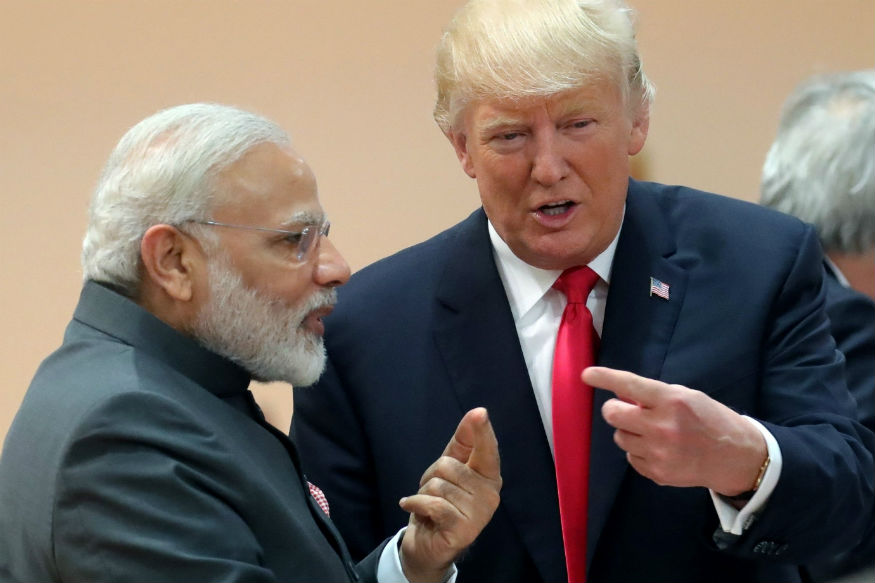
C Uday Bhaskar (29 April 2020) – India has completed one month of the coronavirus disease (Covid-19)-triggered national lockdown and the scale of the socioeconomic disruption and human deprivation has been considerable. Millions are now destitute. The quantum and quality of the damage and mayhem that will ensue before closure/success can be declared is yet to be estimated. Thus, any reference to a post-Covid-19 world will be more of in the form of an aspiration and one can only hope that the pandemic subsides soon.
However, the impact of the pandemic on politics — both domestic and global — has been the subject of animated discussion and various formulations have been advanced. It is akin to the five blind men and the elephant but in this case, the contour of the pachyderm (virus) is insidiously dynamic. One school avers that this is the beginning of the end of globalisation and multilateralism and that the world has entered a period of extended confrontation. Exhibit A to prove this point is the current United States (US)-China tension and the acrimonious exchanges between Washington and Beijing.
The extension of this formulation is that cooperation, to the extent it obtained in post-9/11 global geopolitics, is now a thing of the past and bipolarity is back (US-China), and may soon turn into a Sinicised world where China overtakes the US to become the world’s number one in GDP. In the pre-Covid-19 period, this date was assumed to be around 2030. Does this mean Chinese unipolarity is on the anvil? Unlikely. Such binaries are invalid in the current Covid-19-triggered turbulence.
In an earlier context (2012), while envisioning global trends in 2030, I had advanced the proposition that the US-led international order was under stress. This was illustrated in the trade dependencies engendered by globalisation and the strategic-security dissonance among the major powers — the more visible manifestations of this were the US-China; China-Japan; and India-China rifts. Thus, it was assumed that the emerging global geopolitical landscape in 2030 would probably be a contra-polar world, wherein managing contradictory policy pursuits and contrarian impulses would be the norm — barring any black swan events.
The coronavirus pandemic is that black swan event. The question now is whether polarity itself is a valid referent in the current geopolitical and strategic flux. The direct impact on human security due to the pandemic has been high and there have been over 200,000 deaths globally. Among the major powers, the US, the Eurozone and China, where the virus originated, have witnessed fatalities in the thousands and this number may grow.
Consequently, the domestic politics of these nations will see a significant churn driven by emotive nationalism. The shrill focus on this issue in the US election campaign is a case in point. China, the European Union, Russia and Japan will follow a similar trajectory, where the credibility of the current leadership will be on the test.
India is no exception and managing the pandemic and its fallout will be the single most complex challenge for Prime Minister Narendra Modi. The macroeconomic scene is grim and experts aver the Indian economy will shrink in 2020, before recovering in 2021.
However, one macro-economic trend is unlikely to change. In a pre-Covid-19 world, it was the received wisdom that by 2030, the single State global GDP hierarchy would be China, the US and India. Despite the economic downturn that will unfold due to the pandemic, the resultant GDP matrix post-Covid-19 will be the same, all other factors being normal. This means India, notwithstanding current challenges, will be in the top tier of the global economy.
Thus, despite the current turbulence and negative sentiment about China in particular, the more prudent strategic orientation for India will be to create the necessary politico-diplomatic and economic space to remain engaged with the major powers and trading blocs, however insular they may become in the short-term.
India’s immediate priority is to manage the pandemic and save its more vulnerable citizens. The long-term strategic objective remains the same — the elimination of mass poverty and ensuring a more equitable distribution of its prosperity, while remaining committed to the liberal democratic path.
Hence the review and recalibration of India’s strategic orientation must correspond with the realisation of these objectives — the immediate in relation to saving the lives of its citizens affected by the pandemic; and the long-term improvement of human security indicators. This is what Chanakya identified as yogakshema (well-being) for 1.3 billion people.
India’s external orientation after the end of the Cold War has been to remain engaged with all the major global nodes but stay unaligned, particularly in the military domain. Pursuing this path would be more prudent in a post-pandemic context, despite domestic opinion being advanced that Delhi ought to join hands with a US-led cluster that will lean on China to atone for its many omissions that range from creating the Covid-19 crisis to Doklam, support to Pakistan, and blocking India’s admission to the nuclear order.
The post-Covid-19 recalibration for India is in the domestic arena. It must remain focused on emerging as a credible and equitable socioeconomic power that recognises the principle of power, but adheres to the power of normative principle.
C Uday Bhaskar is director, Society for Policy Studies, New Delhi
The views expressed are personal
This article first appeared in The Hindustan Times.

